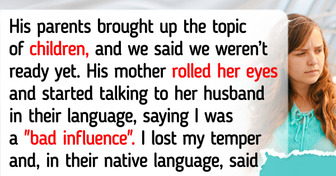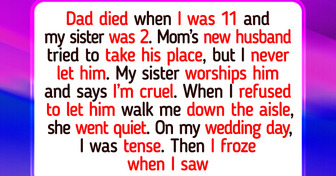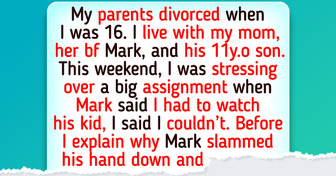18 People Who Dared to Get Plastic Surgery and Hit the Jackpot


Take the quiz now to find out if you’re a true survivor or if you need to brush up on some basics. Remember that survival is your own responsibility.
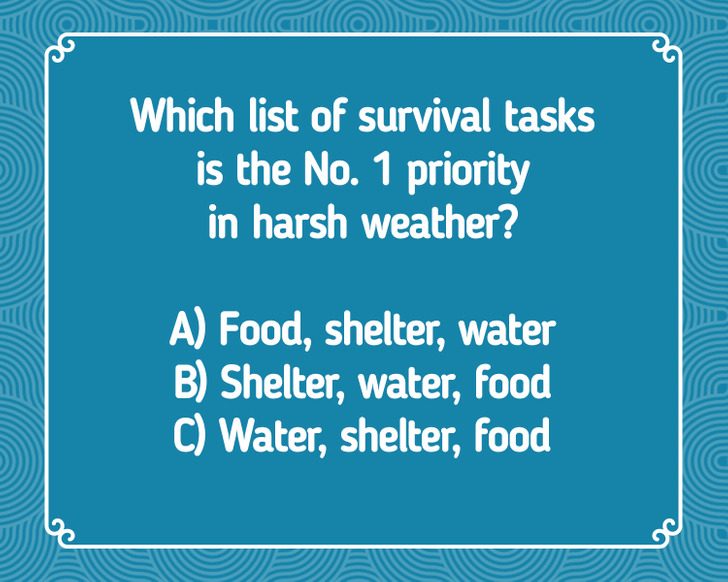
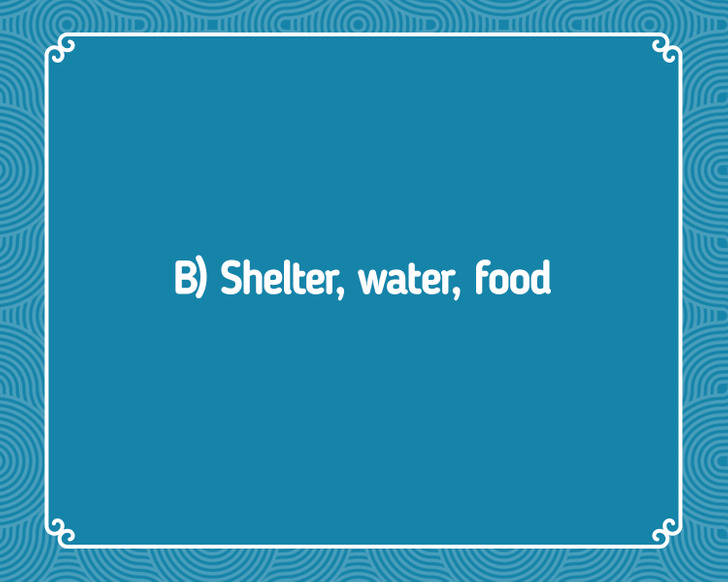
Each situation is different, and your actions may depend on what your body needs first. There is a special 3 and 30 Rule that you may refer to to prioritize the tasks.
You can survive:
Considering that we mention harsh weather, the shelter is the thing you need to take care of in the first place.
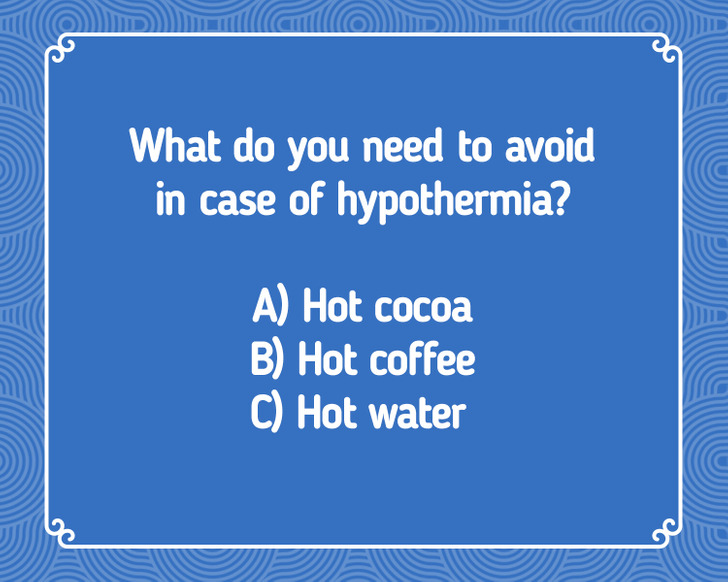

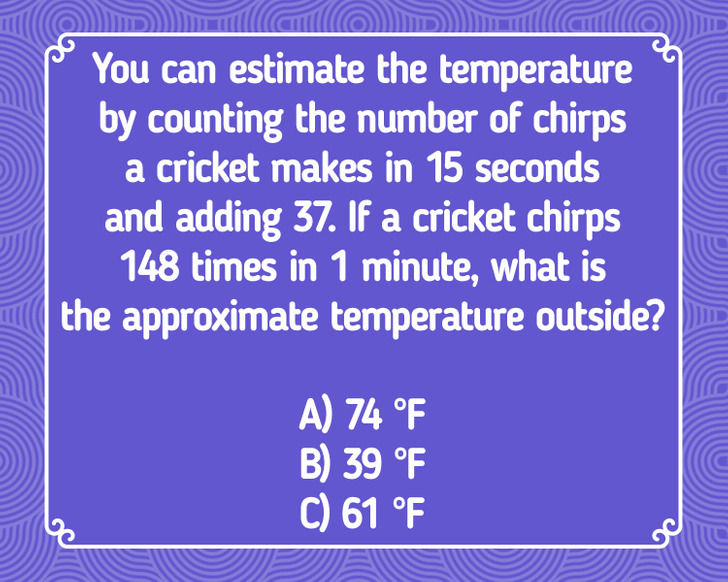

There are 4 sets of 15 seconds in a minute. That’s why:
1) 148 : 4 = 37
2) 37 + 37 = 74
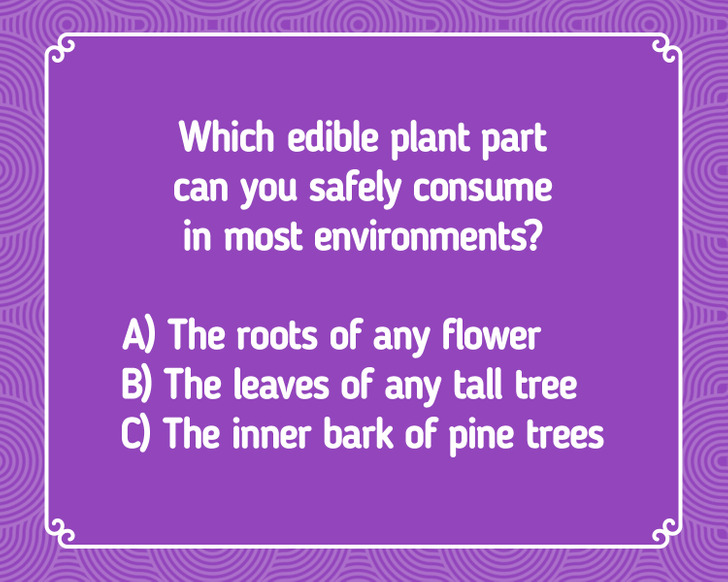

Tree bark from species like pine, birch, linden, elm, and willow can be eaten. It can be prepared in various ways, such as cooking, eating raw, frying, drying, grinding into flour, or even smoking.
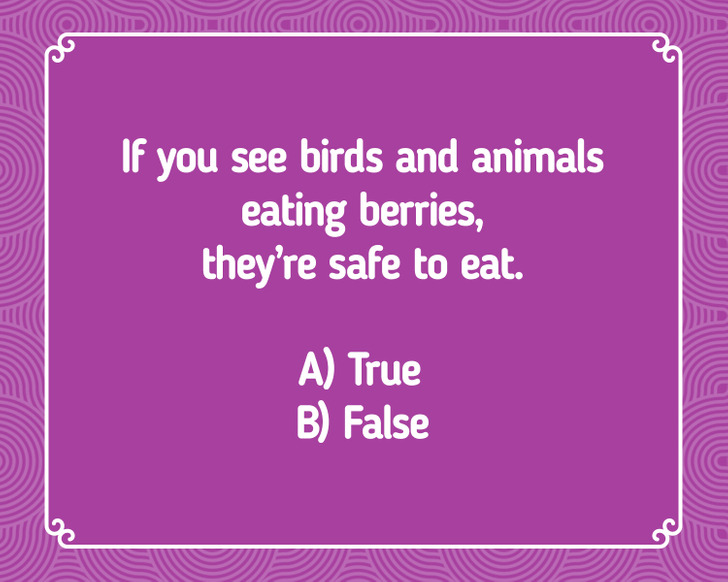

It turns out that some plants that birds and animals may digest aren’t safe for humans. It’s better to avoid anything you’re not sure about. If you’re in desperate need of eating something, make sure to take the edibility test first.
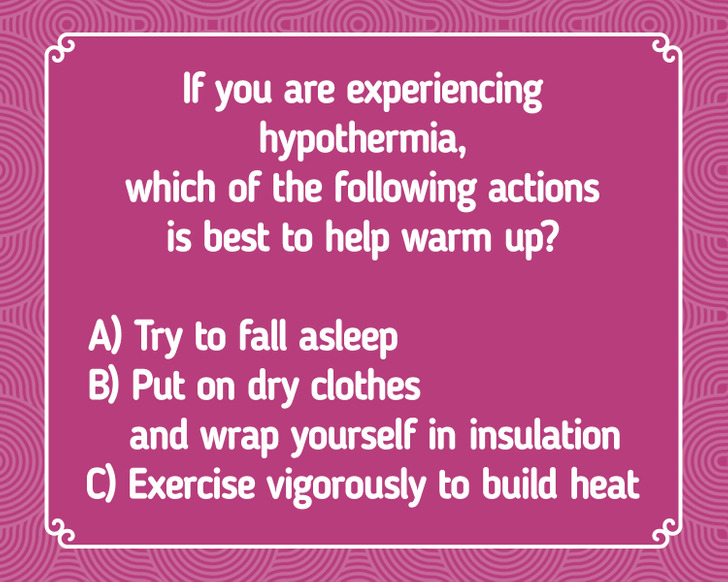
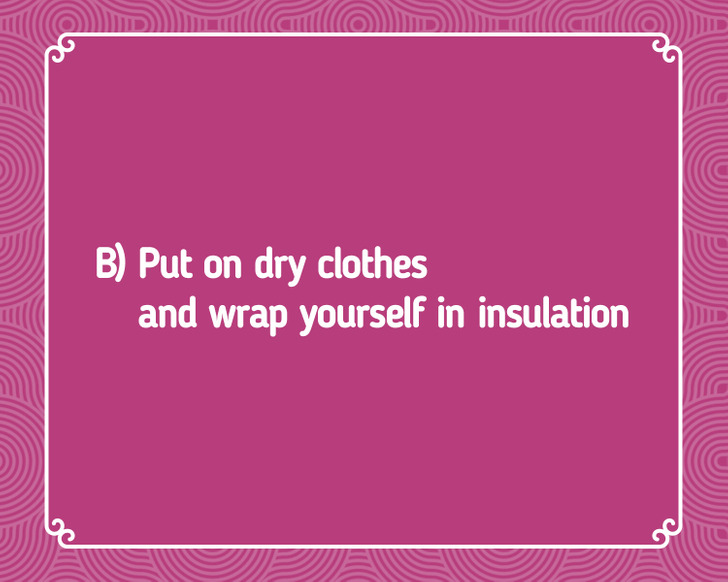
Feeling drowsy and sleepy is a sign of hypothermia. In this case, you shouldn’t fall asleep by any means, as there is a risk of not waking up. Vigorous exercise isn’t a good choice either. If you aren’t dressed properly, you’ll surely get sweaty, which will increase the rate of cooling you experience once you’re done with heating up.
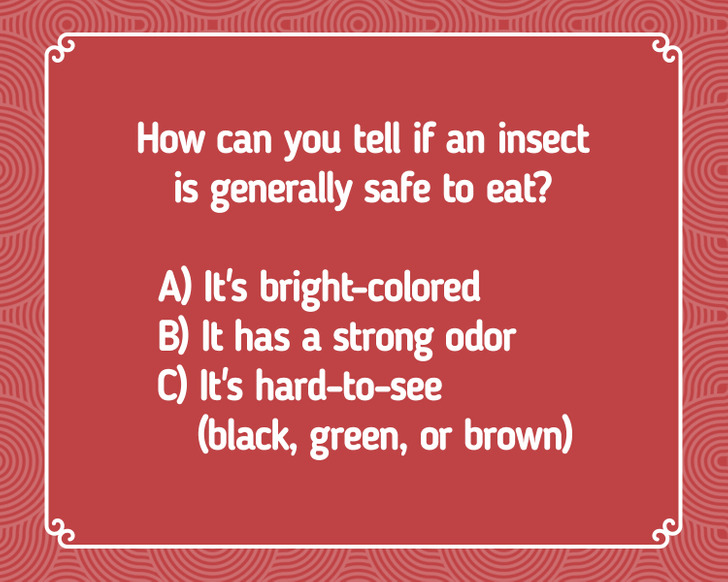
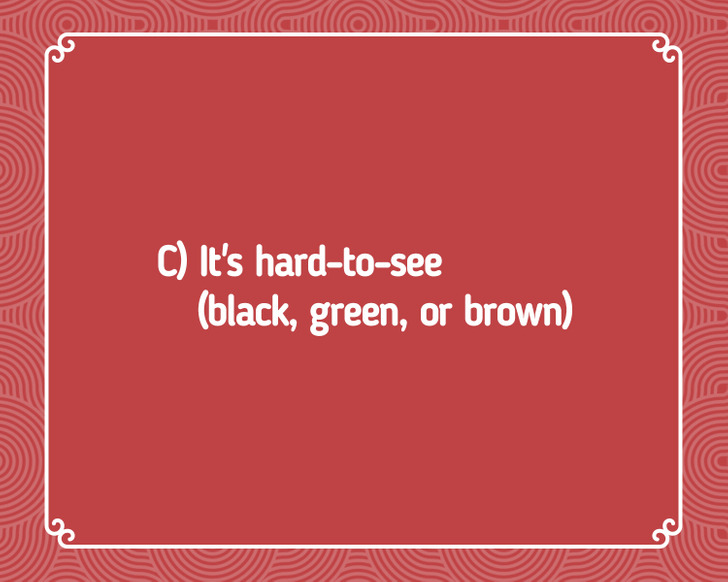
In nature, vibrant colors serve as a warning: “Touch me, and you’ll regret it!” Plus, it’s better to steer clear of insects that give off stinky smells, as they often signal about poisonous substances.
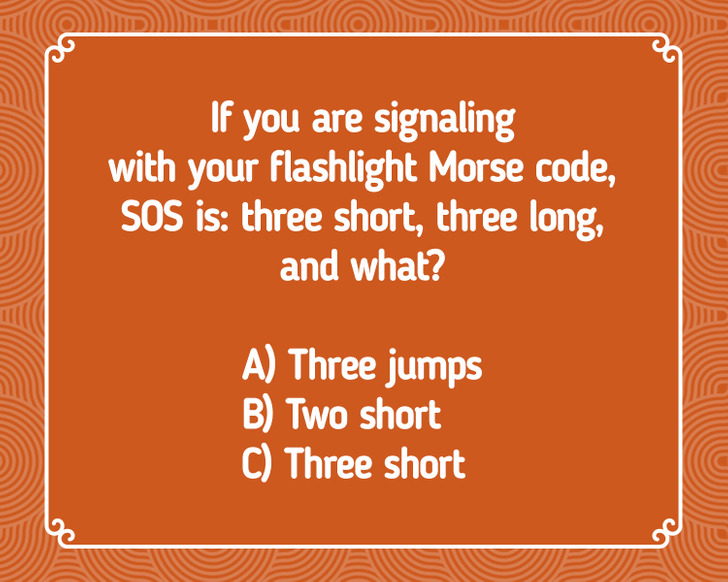

SOS is three short taps followed by three long taps, and then three short taps again.
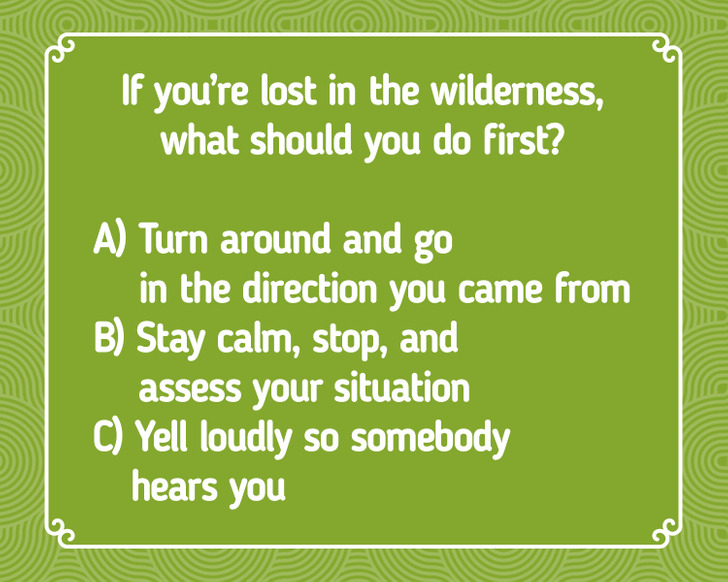
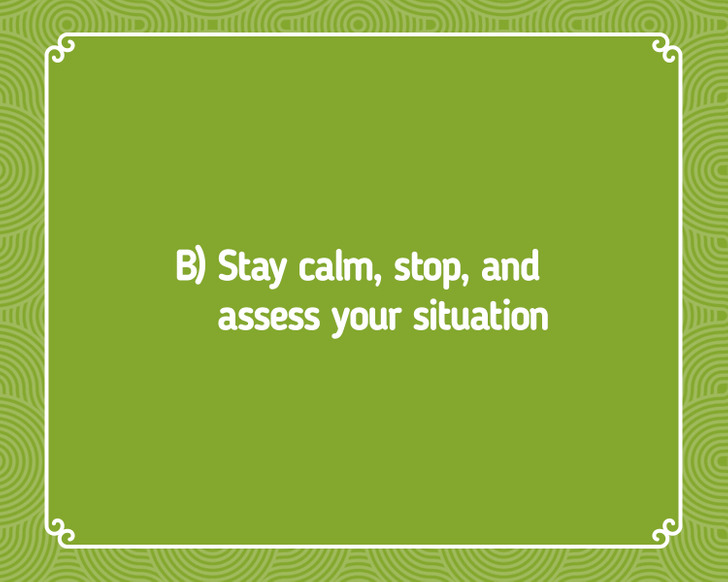
While this question may seem obvious, people tend to start panicking and freaking out once they realize they’re lost. In fact, the first ten minutes of being lost are when most search fatalities make their deadly mistake. So, breathe in, breathe out, and don’t waste your energy on useless actions.
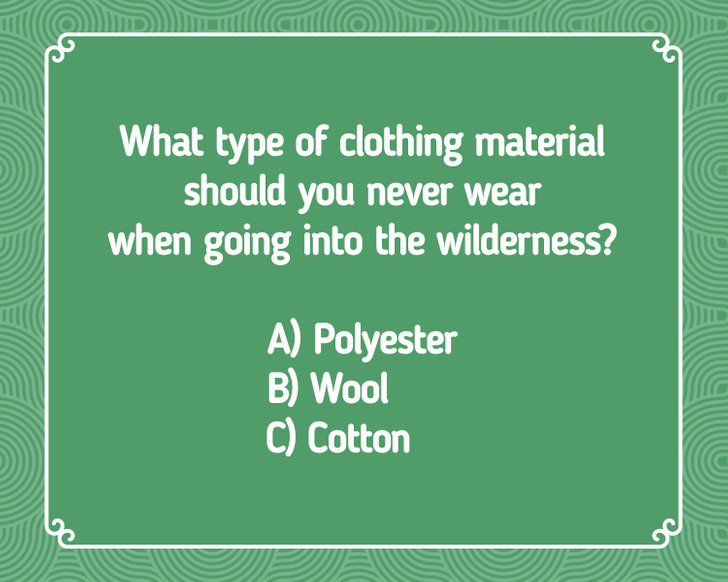

Cotton loses its ability to insulate when damp and dries very slowly, making it unsuitable for effective layering. Instead, opt for these materials: polyester, acrylic, rayon, nylon, wool, polypropylene, fleece, or spandex.
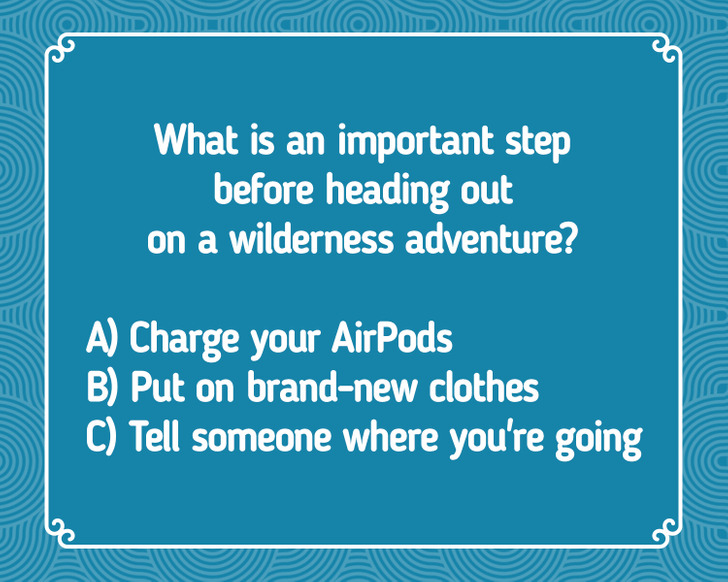

This important step is often overlooked. Tell someone where you’re heading out; otherwise, they won’t know where to search for you. Also, highlight when you expect to be back, so people know when it’s time to get worried.
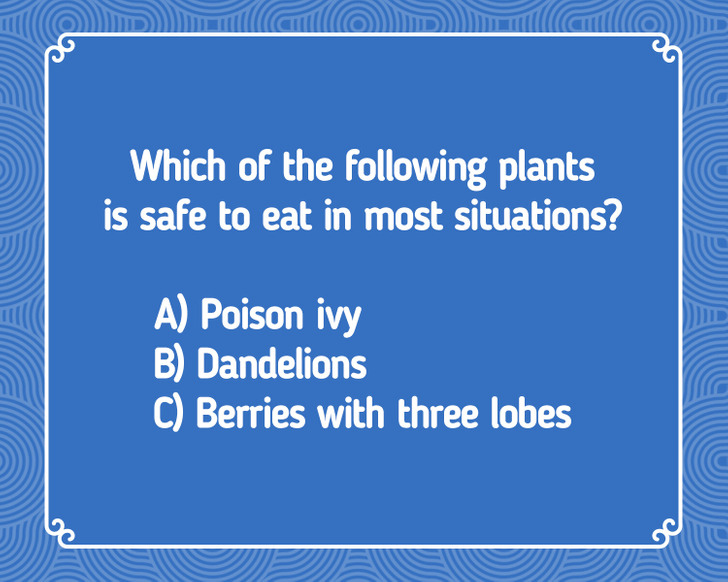

You can eat any part of the dandelion plant—from its bright yellow flower to its roots.
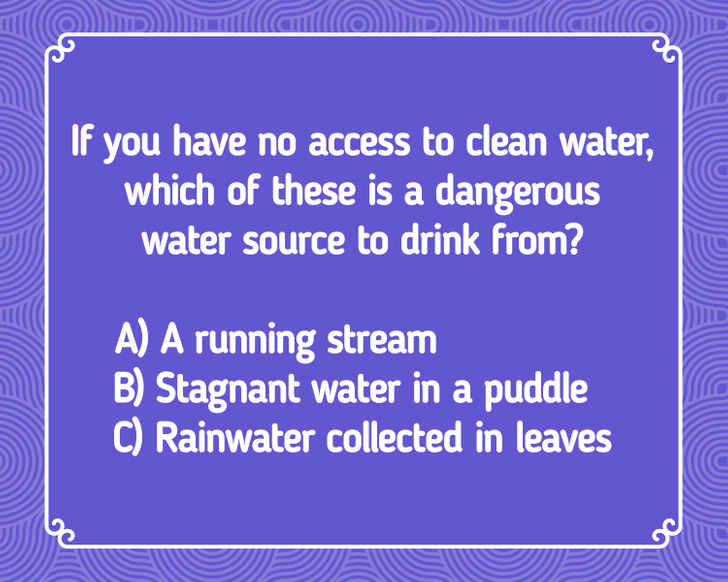

Drinking stagnant water can be risky, as it’s an ideal breeding ground for various bacteria and parasites compared to flowing water.
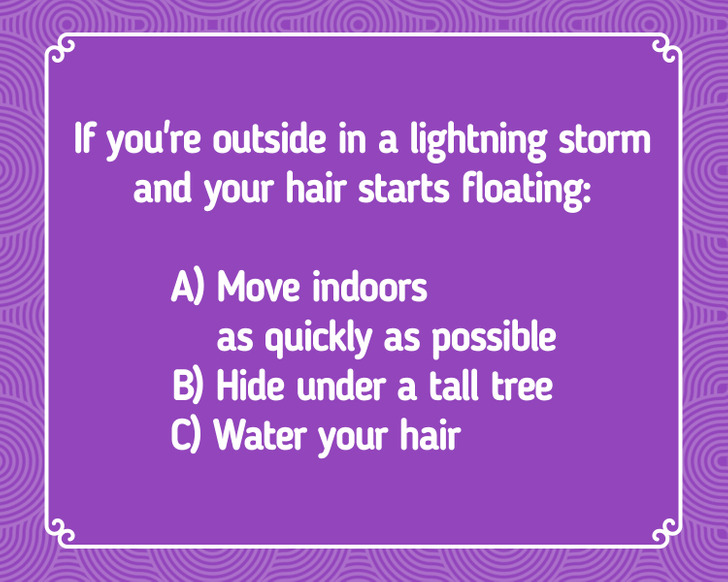

If your hair starts floating, it means that lightning is about to strike you. The count goes by seconds, so you need to find a secure shelter. There is a sadly known photo of two brothers that is a reminder about lightning danger.
If there is no place to hide, squat low to the ground, place your hands on your knees, and tuck your head down between them. Try to make minimal contact with the ground; don’t lie down on it.


We see lightning instantly, while thunder takes roughly 5 seconds to cover each mile. Thanks to this, you can estimate the distance in miles to the lightning. Count the number of seconds between the flash of lightning and the sound of thunder and divide by 5.
You should be cautious not only when choosing plants, bags, or berries to eat, but also when searching for so-called “lifesaving tips.” Following some of them could make a tricky situation even worse! Separate facts from myths and learn what really works when the going gets tough.

